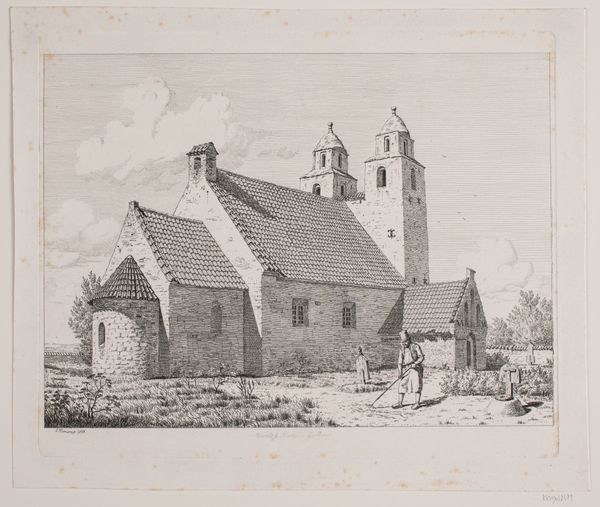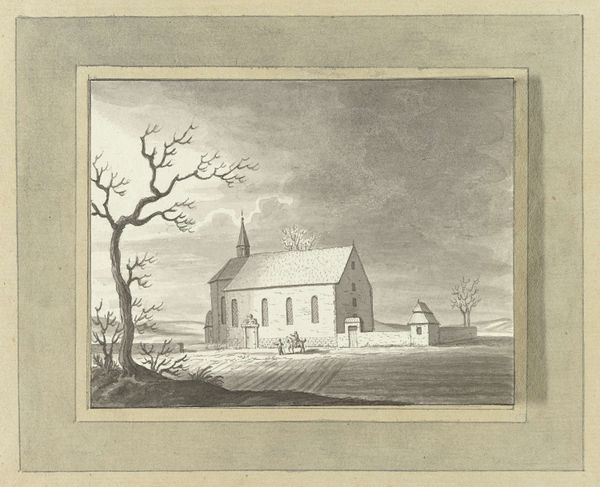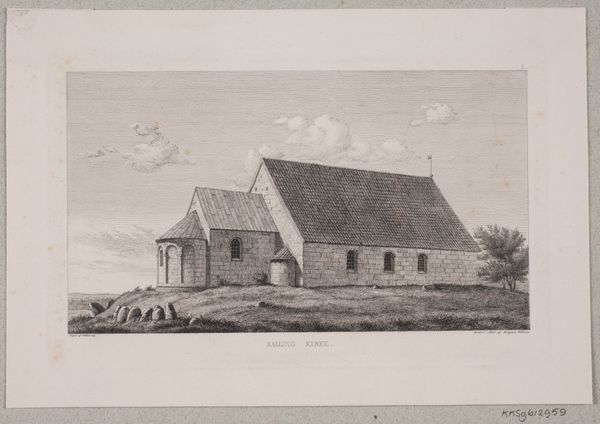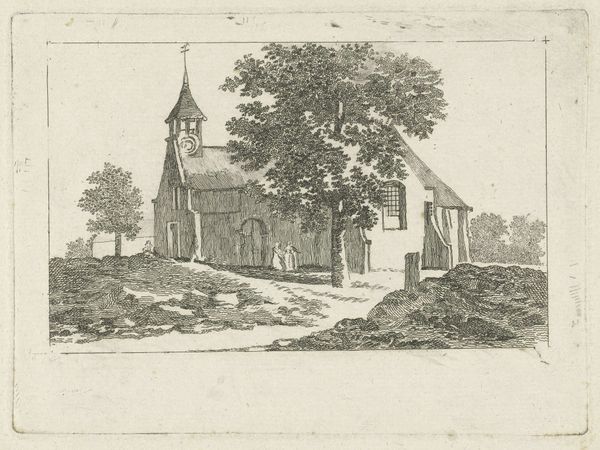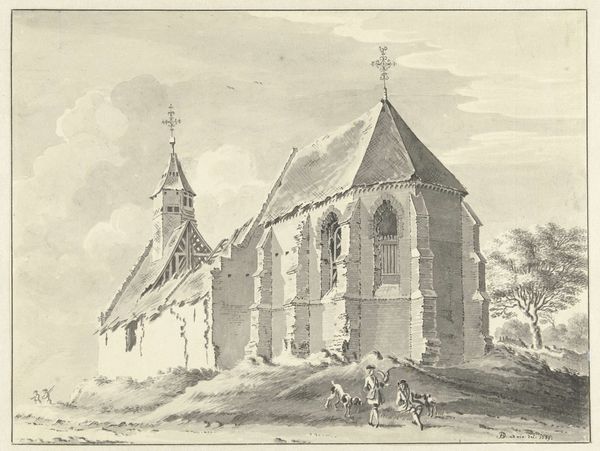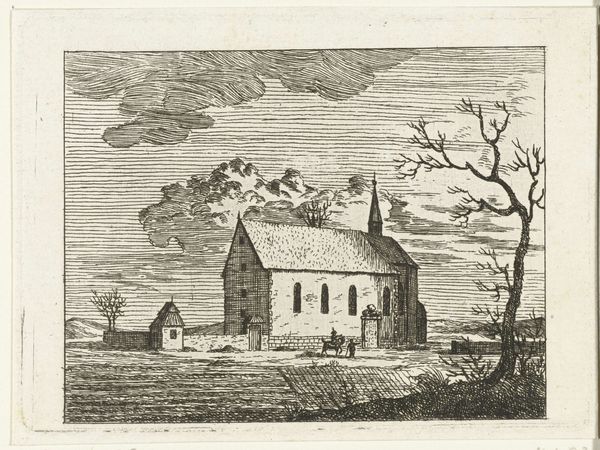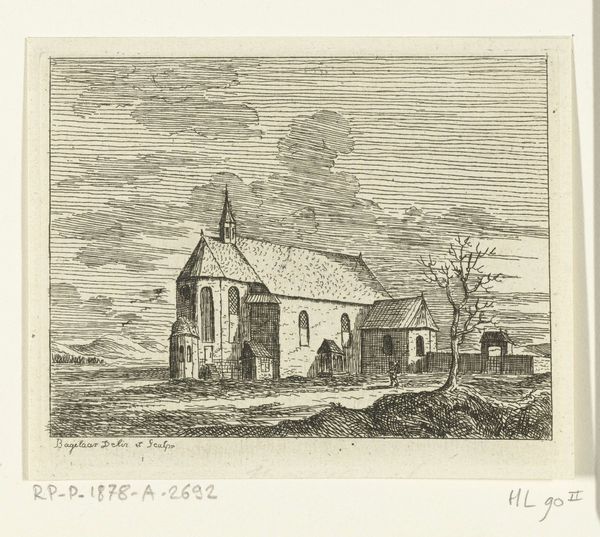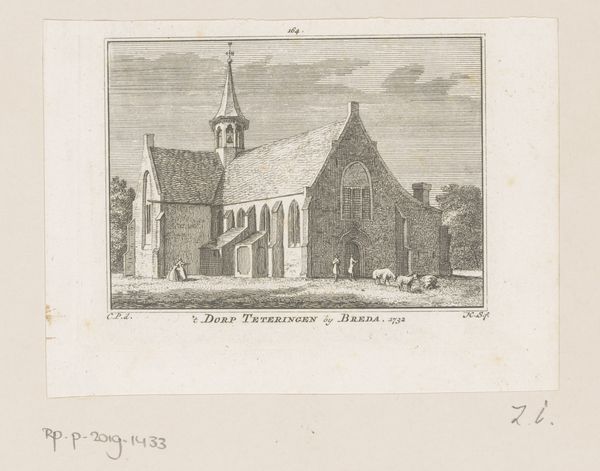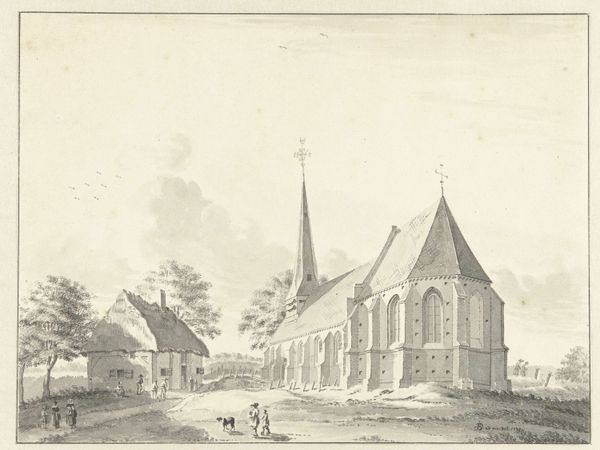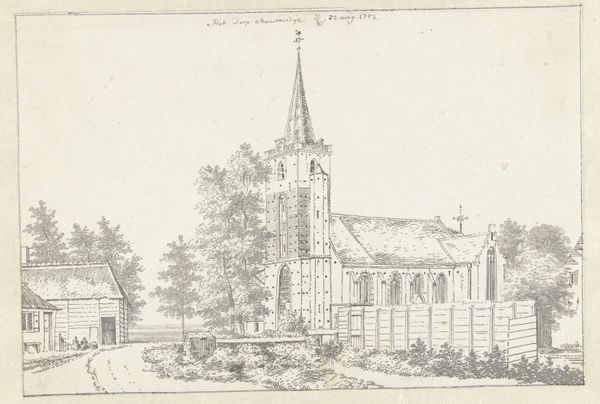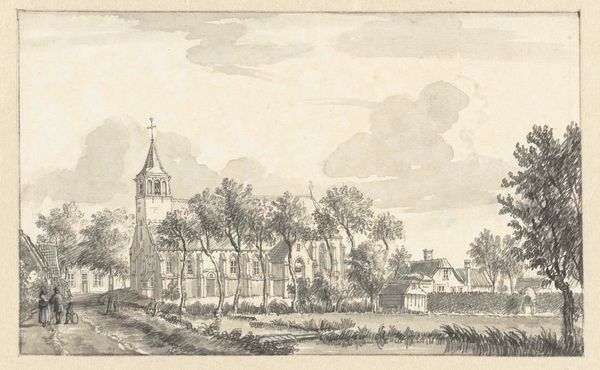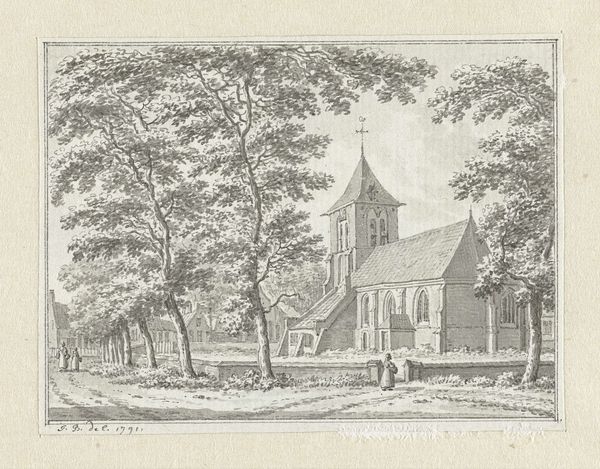
drawing, paper, ink
#
drawing
#
old engraving style
#
landscape
#
paper
#
form
#
ink
#
geometric
#
romanticism
#
line
#
cityscape
#
northern-renaissance
#
realism
Dimensions: height 85 mm, width 110 mm
Copyright: Rijks Museum: Open Domain
Editor: So, this is "Kapel te Zillinge bij Frankfurt am Main" by Ernst Willem Jan Bagelaar, made around 1800. It’s an ink drawing on paper. I find the muted tones really calming, almost melancholic. What's your take on it? Curator: Calm, yes, but consider the era. The dawn of the 19th century saw huge socio-political shifts. Doesn’t the seemingly peaceful depiction of this chapel stand in stark contrast to the revolutionary fervor sweeping Europe? It’s not just a cityscape, it’s a statement, perhaps a yearning for a simpler, more stable time. Look at the geometric rigidity, the almost clinical depiction of the chapel—is it reverence, or an attempt to impose order on a world in chaos? Editor: I see what you mean. So, the artist might be using the landscape to reflect anxieties about broader social issues? Curator: Exactly. The chapel, traditionally a symbol of community and faith, is presented with almost cold detachment. The single figure walking towards it... are they seeking solace, or merely passing by? Bagelaar places the chapel not just *in* the landscape, but *against* it, creating a visual tension that mirrors the tensions of his time. The "realism" here isn't objective; it's charged. How does this reading shift your perception of its calming mood? Editor: It makes me think about what’s being left out, the historical context almost screaming through the silence of the drawing. It's like the artist is acknowledging the change by focusing on what he fears losing. Curator: Precisely. And recognizing that absence helps us understand what this landscape truly represents, both then and now. Editor: I see that now; it's less about the building and more about what it signifies during a turbulent period. Curator: And it shows how art can be a powerful form of commentary. What began as a simple cityscape unfolds to show societal concerns. Editor: Thanks! This context gives me a new framework to look at similar artworks moving forward.
Comments
No comments
Be the first to comment and join the conversation on the ultimate creative platform.
